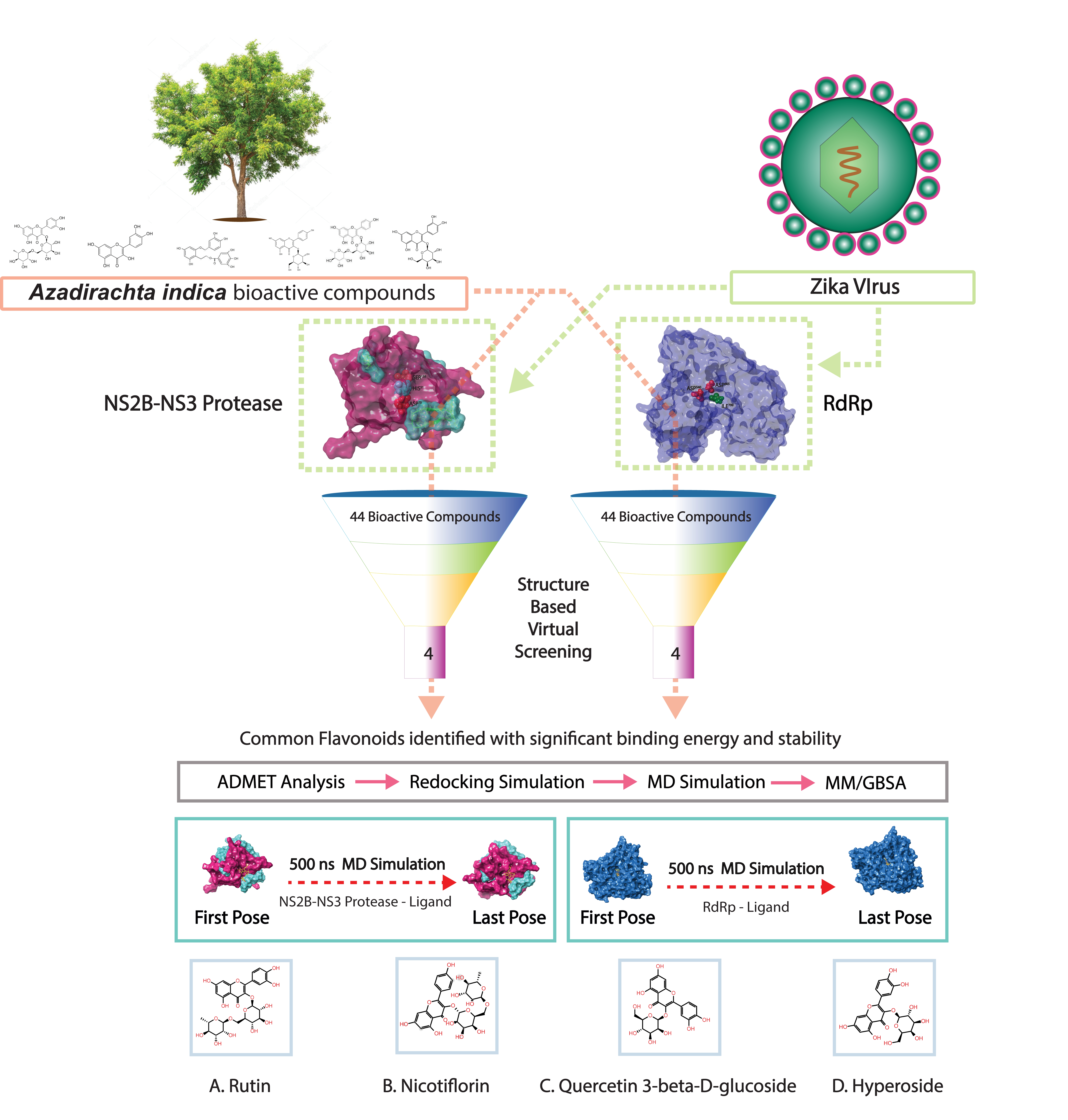Zika virus (ZIKV) has been characterized as one of the potential pathogens and placed under future epidemic outbreaks by the WHO. However, lack of potential therapeutics can result in uncontrolled pandemic like other human pandemic viruses; therefore, prioritized effective therapeutics development has been recommended against ZIKV. In this context, the present study adopted the strategy to explore the lead compounds from Azadirachta indica against ZIKV via concurrent inhibition of the ZIKVpro and ZIKVRdRp proteins using molecular simulations. Initially, structure-based virtual screening of 44 bioflavonoids reported in Azadirachta indica against the crystal structures of targeted ZIKV proteins resulted in the identification of top four common bioflavonoids, viz. rutin, nicotiflorin, isoquercitrin, and hyperoside. These compounds showed substantial docking energy (-7.9 to -11.01 kcal/mol) and intermolecular interactions with essential residues of ZIKVpro (His51, Asp74, and Ser135) and ZIKVRdRp (Asp540, Ile799, and Asp665) by comparison to the reference compounds, O7N inhibitor (ZIKVpro) and Sofosbuvir inhibitor (ZIKVRdRp). Long interval molecular dynamics simulation (500 ns) on the selected docked poses reveals the stability of respective docked complexes contributed by intermolecular hydrogen bonds and hydrophobic interactions. The predicted complex stability was further supported by calculated end-point binding free energy using molecular mechanics generalized born surface area (MM/GBSA) method. Consequently, the identified common bioflavonoids are recommended as promising therapeutic inhibitors of ZIKVpro and ZIKVRdRp for further experimental assessment.

